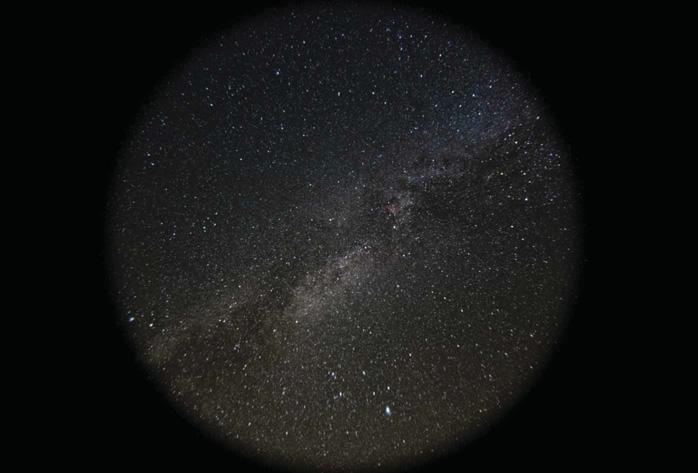
The night sky can be breathtaking, especially when it contains bright views of the Milky Way from a darksky location. But what's the best way to capture the entire stretch of the night sky? There are several methods, but as ever compromises have to be made.
A camera with an interchangeable lens system such as a DSLR or mirrorless camera gives you the best of all worlds, allowing you to go wide-angle or mid-angle. A wide-angle lens has a focal length of 17mm or less, a mid-angle is 18-40mm. Anything over this is getting in too close to the subject to be considered all-encompassing.
If you choose a mid-angle focal length, you'll be able to cover a decent portion of the Milky Way, but you'll need to consider mosaicking shots together to cover all of it. However, seemingly perfect shots can then reveal issues such as lens distortion and edge vignetting, so be prepared to put significant time into a Milky Way mosaic in order to get something that looks natural.
An alternative is to use a wide-angle lens, essentially capturing most of the visible part of the Milky Way in one fell swoop. It seems an obvious choice to reduce workload, but wide-angle lenses have drawbacks of their own.
As with meteor photography, using a wide-angle lens may seem the ideal route - catching a trail is down to luck, but the narrower the field of view, the less chance of success. So it seems a no-brainer to choose a lens that covers the entire sky in one go.
This story is from the {{IssueName}} edition of {{MagazineName}}.
Start your 7-day Magzter GOLD free trial to access thousands of curated premium stories, and 9,000+ magazines and newspapers.
Already a subscriber ? Sign In
This story is from the {{IssueName}} edition of {{MagazineName}}.
Start your 7-day Magzter GOLD free trial to access thousands of curated premium stories, and 9,000+ magazines and newspapers.
Already a subscriber? Sign In

Could We Find Aliens by Looking for Their Solar Panels?- Designed to reflect ultraviolet and infrared, the panels have a unique fingerprint
Researchers searching for life beyond Earth spend a lot of time thinking about what telltale signs might be detectable astronomically. Forms of unambiguous evidence for the presence of life on another world are known as biosignatures. By extension, techno signatures are indicators of activity by intelligent, civilisation-building life.

Antimatter- In our continuing series, Govert Schilling looks at antimatter, the strange counterpart to most of the matter filling our Universe
Particles and corresponding antiparticles are very much alike, except they have opposite electrical charges. For instance, the antiparticle of the electron - known as the positron - has the same tiny mass, but while electrons carry a negative electrical charge, positrons are positively charged.

Where Have All The Milky Way's Early Stars Gone?- Our Galaxy has a curious lack of pristine stars
The Big Bang produced a Universe filled almost exclusively with hydrogen and helium; all other elements - what astronomers call metals - were produced by stars, supernovae and everything that happens later. So if you can pick out a pristine star with no metals polluting it from among the billions in the Milky Way, then you are likely to have a star dating from our Galaxy's earliest days.

Inside The Sky At Night - Two years ago, exoplanet scientist Hannah Wakeford received some of the first data from the JWST
Two years ago, exoplanet scientist Hannah Wakeford received some of the first data from the JWST. In July's Sky at Night, we discovered what she's learned since then.

How to stack DSLR data in Siril
Easily combine multiple frames to boost detailin your astro photos

Lunar occultation of Saturn
You'll need to strike a balance on 21 August to capture the Moon covering the ringed planet

How to plot a variable star light curve
A rewarding project to chart stars that change brightness

Smartphone photography with a telescope
Mary Mcintyre explains how to get impressive night-sky images using your phone

Once-a-century solar storm is overdue
If a Carrington Event struck today it would be catastrophic, says Minna Palmroth

The new era of human spaceflight
There's been a step-change in crewed space missions since the dawn of the 21st century. Ben Evans charts its course and looks ahead to future horizons